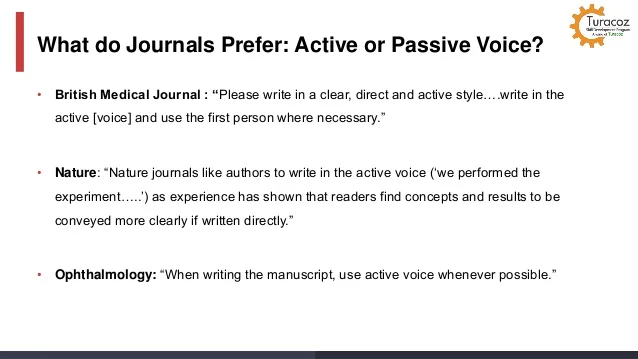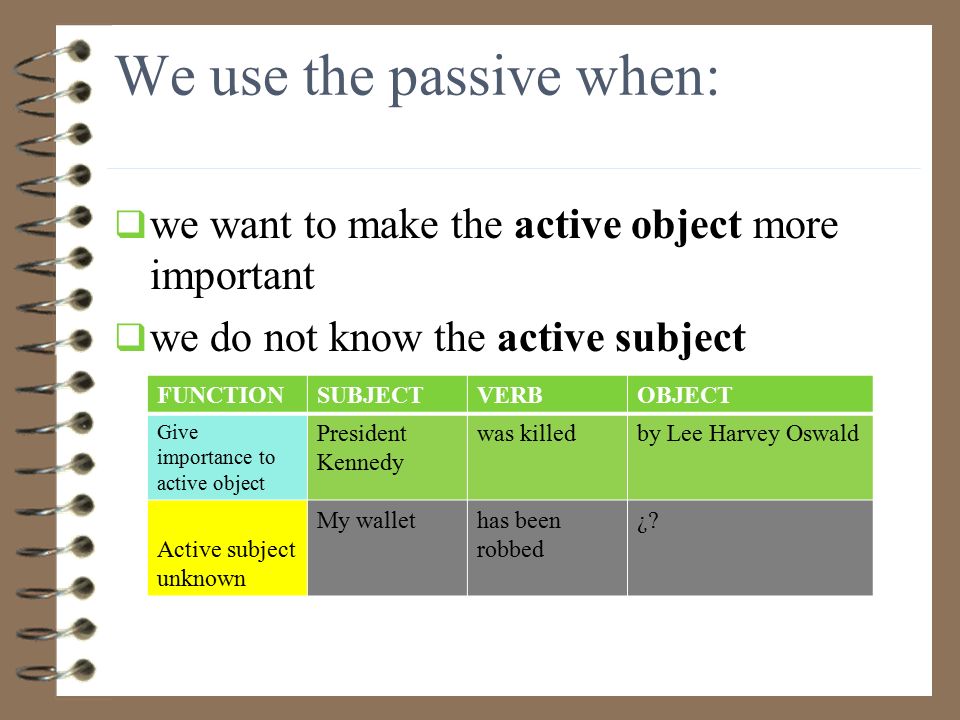Active and passive voice are two different styles of writing sentences in English. Both these voices help in formulating sentences in a variety of ways, depending on the writer’s needs and requirements. In addition, they help in setting the clarity and tone of the sentences. Therefore, We bring you a perfect guide on various ways one can formulate sentences in the active or passive voice.

How are Sentences Written in Active Voice?
In sentences written in active voice, the subject performs the action of the phrase. For this reason, the subject of the sentence comes before the verb according to chronological order.
An active sentence is made up of three parts: subject, verb, and object. Let’s look at the different parts of a sentence to help you comprehend this better:
Subject: The doer is the sentence’s subject. They are the ones who carry out the action of the verb.
Verb: The action of the subject is represented by the verb, which is also known as the predicate.
Direct object: The recipient of the verb is the direct object. If you’re not sure if a statement has a direct object, consider who or what the verb impacts.
Indirect object: Someone or something that is affected by the verb but is not the primary object is called the indirect object. Consider asking who, what, for whom, or for what the verb is impacting if you’re looking for the indirect object.
How are Sentences Written in Passive Voice?
Passive voice is the polar opposite of the active voice. In this case, the verb acts on the subject rather than the subject acting on the verb. This indicates that the subject is either secondary to the action or that we have no idea who or what the subject is. Like its active voice counterpart, a passive sentence is made up of three parts, however, in this case, the order is slightly different: object, verb, and subject.
Importance of Writing Sentences in Active Voice
- A sentence written in the active voice will always have fewer words than a sentence written in the passive voice. To guarantee that the assertion makes sense, passive voice sentences frequently require additional words like “as”, “was,” “by,” and “be.”
- Sentences in active voice are easier to read since they get straight to the point with fewer words. The active voice uses short, direct remarks rather than convoluted sentences that need the reader to determine the meaning.
- When you write in the active voice, you appear more authoritative and knowledgeable about the topic at hand. Thus, it enables you to present a straightforward message that provides useful information to the reader.
- Writing in the active voice builds momentum, which helps keep readers interested throughout the piece. When you utilise passive voice, your information may get dragged out and end up being less interesting to read. Thus, in some cases, usage of active voice encourages readers to stay on the page.
Why Active Voice is preferred in Writing, especially Content Marketing?
In content marketing, using active voice makes your material more engaging for readers. When you read a sentence in passive voice, it can feel like you’re reading an educational essay. This may cause readers to abandon your work in favour of more readable information. Using active voice in direct marketing materials, like advertising, as well as indirect marketing resources, like blogs and articles, helps you to capture and hold on to your audience’s attention.
Furthermore, it’s beneficial because it provides information in a timely and efficient manner. Someone who clicks on your article may have a query that needs to be answered in the shortest and easiest way possible. In that case, you don’t want to confuse them with unnecessary fluff or long words. Therefore, giving them the facts in a concise but clear manner improves their understanding of your write-up. Moreover, it motivates consumers to consult your information more frequently to solve their queries.

Why Do Some Writers Prefer Passive Voice?
Even though active sentences are more concise than their passive voice counterparts, certain writers may choose to employ the use of passive voice in certain situations. After all, it’s still grammatically correct. The following are some of the most common reasons for using passive voice in content:
Different Type of Content
One of the most common motivations for using passive voice is to appear more knowledgeable. For this reason, passive voice is sometimes used in academic writing, especially in STEM (science, technology, engineering, and math) subjects.
Client Request
It’s likely that if you’re writing content for a customer, they’ll ask you to write it in passive voice. They may favour the use of passive voice over active voice, as they might want their work to appear more scholarly, or simply because they might enjoy its tone.
Change in Tone
Though active voice sounds more conversational, it can also seem harsh or abrupt at times. If you want to vary the pace and tone of your text, insert some passive voice remarks throughout the write-up.

Some Examples of Active and Passive Sentences
| ACTIVE VOICE | PASSIVE VOICE |
| Mark ate pasta at lunch | At lunch, pasta was eaten by Mark |
| Lions roam the forests | The forests are roamed by the lions |
| Jacob and Emily will go to watch a movie tonight | At night, a movie will be watched by Jacob and Emily |
| Charles read a book today | A book was read by Charles today |
| Michael is a great athlete | Michael is considered to be a great athlete |
Conclusion
In the end, it is always recommended to always think carefully about whether you should write your content in the active or the passive voice. Basically, the choice depends on what you’re trying to portray in your write-up. If you want to draw attention to the doer, then you should use the passive voice, however, if you want to draw attention to the action, then you should go for sentences in active voice.
Share with your friends





